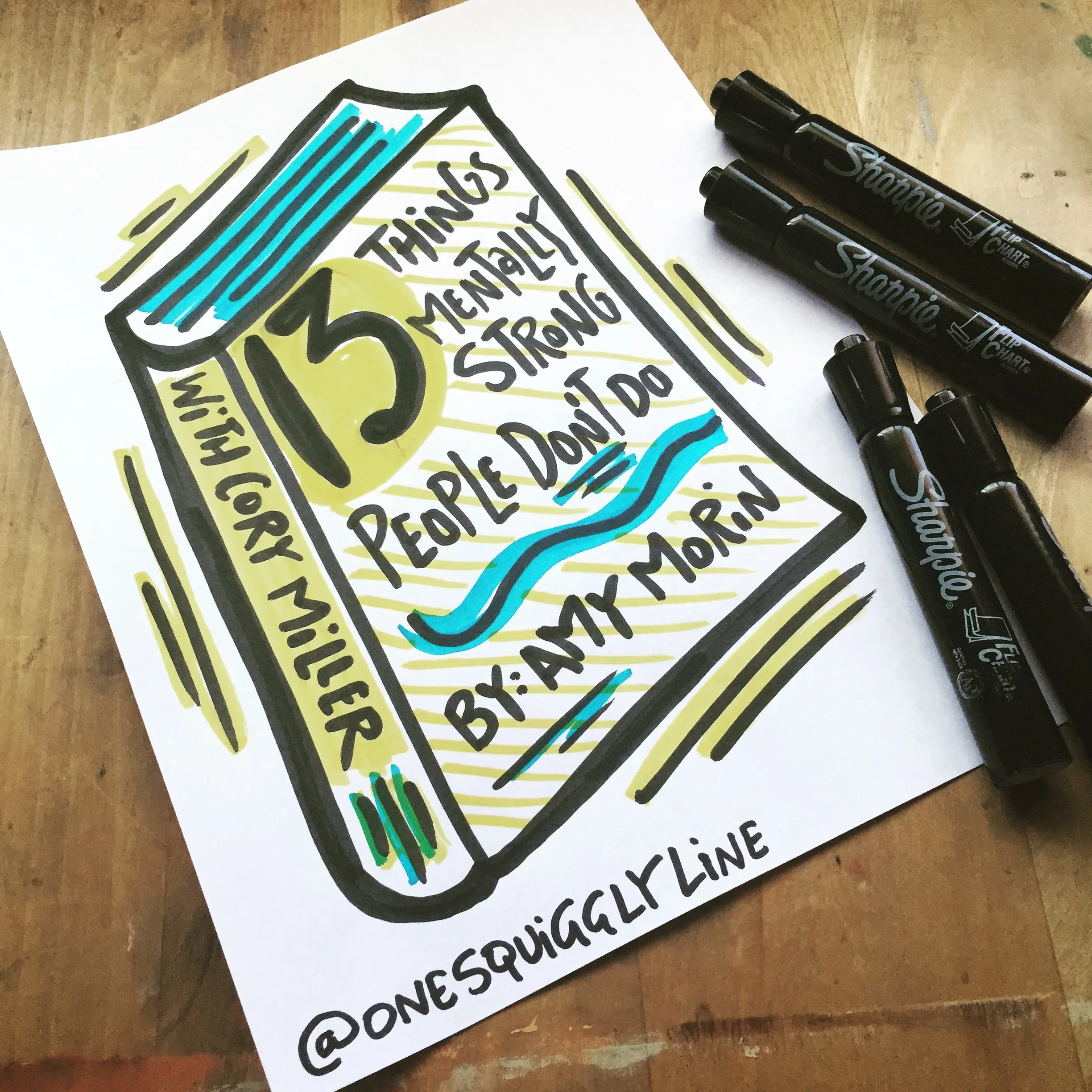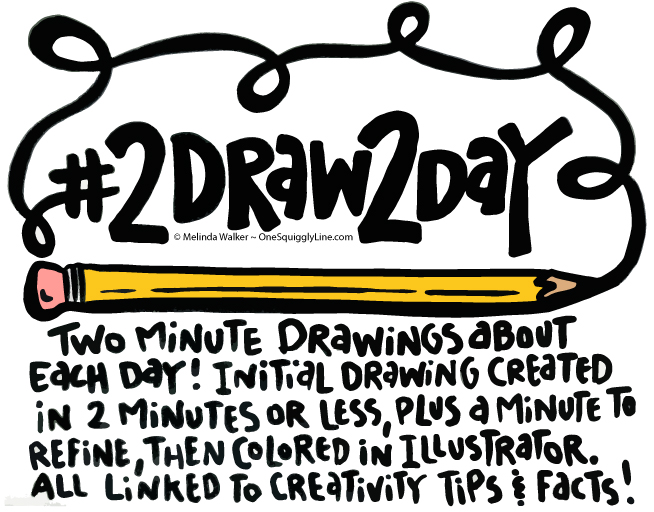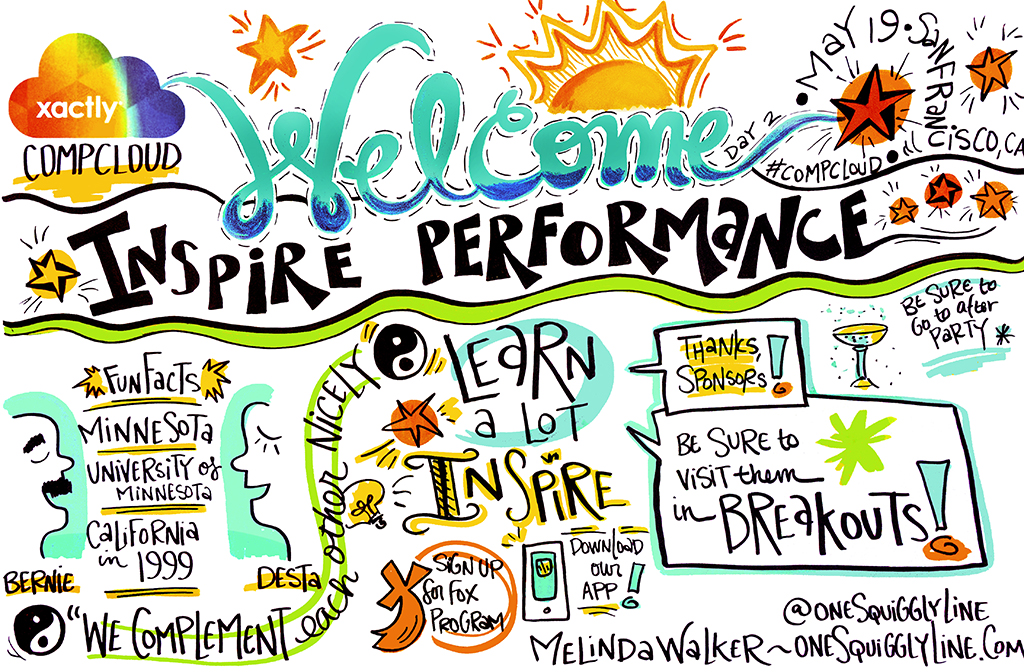What exactly are sketchnotes? I define them as small-scale visual notes drawn in real-time, live or from audio or video files. Mine are usually in black-and-white. They can also be created from print materials, although those often end up being more like illustrations than sketchnotes. At least in my experience.
What's the difference between sketchnotes and illustration? The main difference between the two is the number of revisions — illustrations have many, sketchnotes have none!
The sketchnote above was drawn with an ultra fine Sharpie marker while listening to an audio file from The Business Soul Sessions online course by Beth Kempton. Sketchnotes from the course will continue to be added to this Flickr album and Pinterest board until the set is complete — close to 40 total!
Visual Thinking: Words & Pictures Together
What grabbed your attention first — the image above or the big chunk of text below?
Odds are, the image grabbed your eye first. It's probably the main reason you're reading the text in the first place! So go back to the image for a minute. Really look at it. READ it.
Now, read the paragraph below:
Visual thinking makes complex information simple, brings clarity to confusing communication, makes the common unique, turns the passive into the active and apathy into interest. With visual thinking, the clumsy becomes elegant, the impersonal becomes personal, the dry becomes juicy, "Yes, but..." is replaced with "Yes, and...", trial and error turns to trial and learn, the cold becomes warm, and the separate become unified.
That paragraph and the accompanying image say the same thing! Most people find the information easier to absorb through the image than the paragraph. They're able to absorb that information faster and remember it longer. And, it's a lot more fun!
Check out One Squiggly Line's About Visual Thinking page to learn more.
Visual Thinking: Visual Lists
There are tons of articles floating around out there about how to increase your social media following. After reading a number of those articles, they all start to blend together. The same information presented again and again, with most of it being just basic common sense. Even if the content has been seen time and time again, visuals can make things seems fresh and new. When you make things visual, they stand out and draw people in. Read the whole article here.
Visual Thinking: Webinars, Social Media & Real-Time Drawings
A lot of information and ideas that used to be shared in person are now being shared online. Surprising to some, hand-drawn visuals can still be created in real-time, even when the entire interaction is taking place through a screen. Hand-drawn visuals are especially powerful in these situations because they give a very personal touch.
Webinars are a great example. Most webinars have an accompanying slide deck, chat room, and Twitter hashtag to follow. While the slides may have some visuals, the are generally seen in a completely different context than the chat room or Twitter stream. And with a lot of people interacting through chat and social media, it's really easy for comments and insights to get lost.
When hand-drawn visuals are posted in real-time during your webinar, they immediately grab people's attention. They keep the conversation alive, even after the webinar ends, thanks to your webinar hashtag. And hand-drawn visuals allow others to interact with core nuggets of your content, even if they missed your webinar. That can make them want to learn more and lead them to join you at your next event.
Be sure to watch this 15 second video to see what I mean. It shows 12 visuals that were drawn and posted to social media in real-time during the main 45 minutes of a webinar. The last 15 minute were devoted to Q and A, which I did not cover, but certainly could have, if needed.
To take a closer look at the visuals and see them all at once, check out this Flickr Album.
Please keep in mind, these were all drawn and posted in real-time. That means there was only about 4 minutes to draw, photograph, and post each picture!
Visual Thinking & Creativity: Do it Daily!
It's commonly thought creative and artistic abilities are one and the same. And only a select few are born with these talents. Truth is, creative and artistic abilities are very different. But they are both skills that anyone can learn and improve with some practice. Daily practice.
That's what my new project is all about. Daily drawings combined with facts, tips, and tricks about creativity. All shared on social media with the hastag #2Draw2Day. Why the number 2? No more than 2 minutes is spent on the main drawing (digitizing takes waaaay longer!), and each creativity tip, trick, or fact takes no more than 2 minutes to read and understand.
Daily creativity boosters made quick, simple and fun! Use the social media buttons below to follow along!
Graphic Recording: Welcome!
Friendly visuals can set the tone for the day! This graphic recording was created during the welcoming remarks at the CompCloud event last month here in San Francisco. This represents about a half an hour of content on one 40"x60" board. As you can see, there's some white space and the writing is fairly large.
The next blog post will show another visual from the same event created during a much longer session. As you'll see, the length of the session and amount of content covered impacts the overall look of the resulting graphic recording image.
Visual Notes: How to Choose Between Graphic Recording and Sketchnotes
Graphic recording. Sketchnotes. Visual notes. The terms are often used interchangeably. But there are some distinct differences. Graphic recording is usually done on flip chart or larger paper, foam core board, or white board, with the graphic recorder standing in front of the group. Sketchnotes are much smaller (think printer paper or a notebook) with the sketchnoter sitting down - mine are usually black and white, but they can also be in color, too. Visual notes is an umbrella term including both graphic recording and sketchnotes. At least that's how I define things.
If you're looking to hire someone to create visual notes for you, how do you know if sketchnotes or graphic recording is best for you?
Generally, if you're going to bring someone in to work in person with your group, graphic recording is the way to go. Part of what makes graphic recording so powerful is that everyone in the room can watch the image unfold along with the conversation. This continually draws people back into the content and keeps them engaged. When displayed after, the images allow people to literally see the big picture of the content and discuss it with those around them. This would happen on a much, much smaller scale with sketchnotes, simply because only a few people can look at them at the same time.
If you're looking for visual notes of a video or audio file, then sketchnotes would probably work best. Sketchnotes can be just as powerful as large graphic recording images when displayed online. If nobody will be around to watch the notes unfold and you're only interested in digital files, it really doesn't matter what size the original notes are.
The sketchnote above was created from an audio file for the online course The Business Soul Sessions.
Spot Illustration: A One Word Story
Spot illustrations are simple drawings that illustrate one simple concept or word. (That's how I define them, anyways!) Often, spot illustrations turn that concept or word into a simple story. And, as anyone in marketing, sales, communication, and pretty much any other type of business knows, stories are where it's at.
Stories grab attention and draw people in. They make people curious and give them a reason to care. They can bring personal meaning to technical explanations. Stories bring things to life. Even if only a tiny glimpse of the story is told.
That's what spot illustrations do. They bring things to life and give just a glimpse of a story. Enough of a glimpse to grab attention, draw people in, and make them curious enough to find out how the story ends.
Contact me to have some hand-drawn spot illustrations created especially for you!
Sketchnotes: Make online learning much richer!
Sketchnotes keep people engaged with your content in a whole new way. They can literally give students the big picture of each lesson or the course as a whole. Presenting information in new ways allows people to think about that information in new ways, too. And that's often when real learning takes place.
The sketchnote above was created from an audio file from one lesson of The Business Soul Sessions by Beth Kempton and Kelly Rae Roberts. They packed a lot of info into a very short talk! With the sketchnote displayed where students can look at it while listening to the file, students are much more likely to remember much more of what they just heard.
Visual Thinking & Meetings: Why ARE We Here?
Why bother to have a meeting if nobody knows why they're there? And they're still wondering what that meeting was all about after they left? Sometimes, all it takes is a simple visual to make things crystal clear. Visuals can remind those in charge to state the objectives and make sure everyone understands them before work begins. Visuals can also remind people to ask questions when things aren't so clear. And if someone's mind wanders, just looking at that visual will bring them right back into your content.









